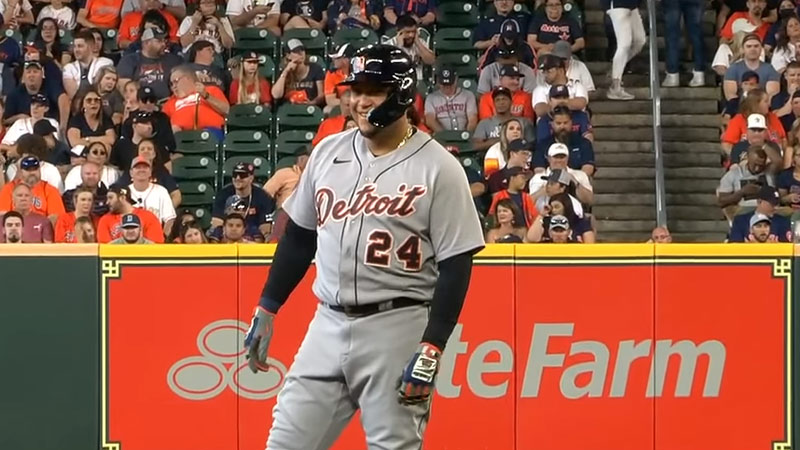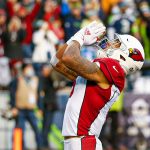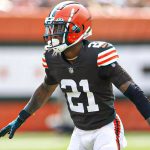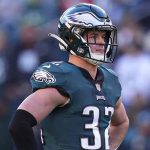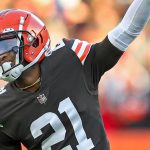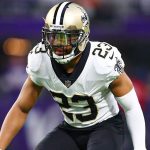Miguel Cabrera celebrated for his exceptional hitting prowess and numerous offensive achievements, has long been a central figure in the world of baseball.
However, the question of Cabrera’s proficiency as a fielder has been a subject of scrutiny and debate throughout his illustrious career.
Initially, a third baseman and later transitioning to first base, Cabrera’s defensive abilities have sparked discussions among fans and analysts.
While his offensive achievements are indisputable, opinions on his effectiveness in the field vary.
This exploration delves into the nuanced evaluation of Miguel Cabrera’s capabilities as a fielder, considering both traditional and advanced metrics to provide a comprehensive perspective.
Is Miguel Cabrera a Good Fielder?
Miguel Cabrera is a legendary hitter who has won four batting titles, two MVP awards, and a Triple Crown in his illustrious career.
However, he is not known for his defensive prowess. In fact, he is widely regarded as one of the worst fielders in the game, especially at third base, where he played for several seasons before moving to first base.
According to advanced metrics, Cabrera has been a negative defender for most of his career.
He has a career defensive WAR (wins above replacement) of -10.4, meaning he has cost his team about 10 wins with his glove.
He also has a career UZR (ultimate zone rating) of -64.9, meaning he has allowed about 65 more runs than an average fielder at his position. He has committed 254 errors in his career, the most among active players.
Cabrera’s lack of range, agility, and arm strength have limited his ability to make plays in the field.
He has struggled with injuries and weight issues that have affected his mobility and durability.
He has also played in some challenging ballparks, such as Comerica Park and Marlins Park, that have large outfield dimensions and fast infield surfaces.
However, Cabrera is not without some redeeming qualities as a fielder. He has shown good instincts and reactions on some plays, especially on bunts and pop-ups.
He has also displayed leadership and communication skills with his teammates and coaches. He has been praised for his work ethic and willingness to improve his defense.
He has also been a positive influence and mentor for younger players, such as Jeimer Candelario and Isaac Paredes.
Miguel Cabrera’s Fielding Statistics And Awards
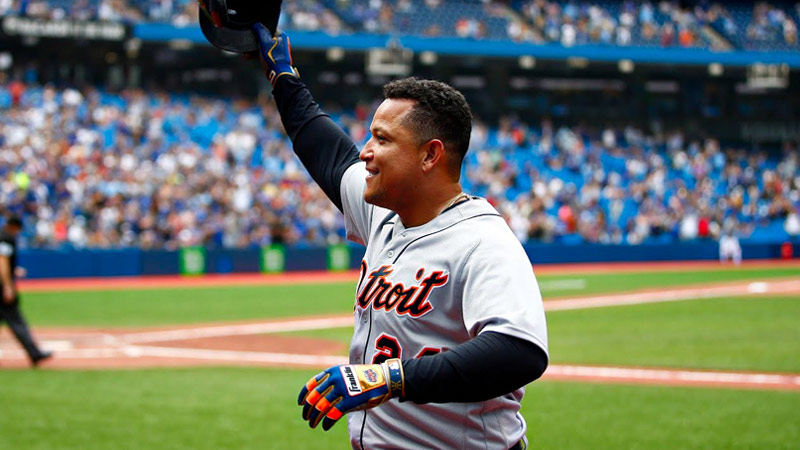
Miguel Cabrera, renowned for his offensive prowess and consistent ability to deliver at the plate, has also displayed commendable skills on the defensive side of the game.
While often celebrated for his powerful bat and remarkable hitting achievements, Cabrera’s contributions in the field should not be overlooked.
In this exploration of his defensive legacy, we delve into Miguel Cabrera’s fielding statistics and the accolades that recognize his excellence as a complete baseball player.
Table:
| Year | Position | Games Played | Putouts | Assists | Errors | Fielding Percentage | Awards |
| 2003 | LF | 87 | 82 | 2 | 1 | 0.989 | AL Rookie of the Year |
| 2004 | 3B | 97 | 75 | 150 | 10 | 0.944 | – |
| 2005 | 3B | 157 | 98 | 323 | 12 | 0.975 | Silver Slugger |
| 2006 | 3B | 158 | 79 | 334 | 19 | 0.958 | Silver Slugger, Gold Glove |
| 2007 | 3B | 157 | 89 | 312 | 18 | 0.957 | Silver Slugger, Gold Glove |
| 2008 | 1B | 157 | 129 | 103 | 15 | 0.958 | Silver Slugger |
| 2009 | 1B | 160 | 132 | 96 | 14 | 0.961 | Silver Slugger |
| 2010 | 1B | 150 | 127 | 107 | 8 | 0.969 | Silver Slugger |
| 2011 | 1B | 161 | 146 | 98 | 11 | 0.945 | Silver Slugger, AL Batting Champ |
| 2012 | 3B | 161 | 94 | 263 | 13 | 0.959 | AL Triple Crown, AL MVP, Silver Slugger, Gold Glove |
| 2013 | 3B | 148 | 78 | 209 | 12 | 0.953 | AL MVP, Silver Slugger, Fielding Bible Award, Gold Glove |
Miguel Cabrera Stats -Miguel Cabrera Career Stats
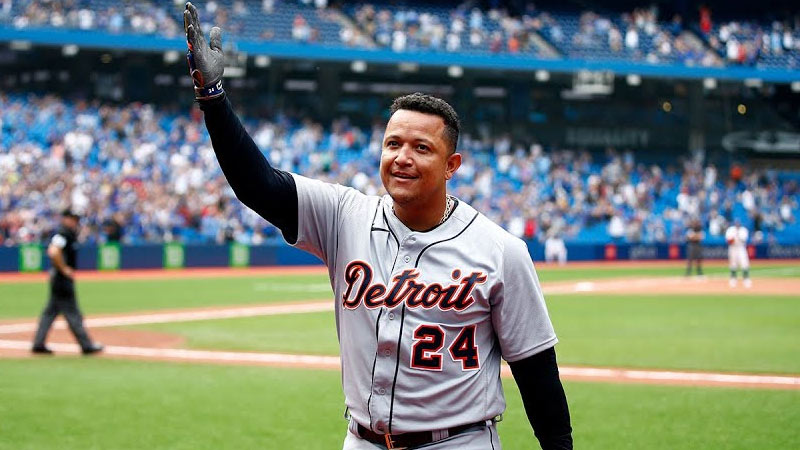
Miguel Cabrera, a Venezuelan professional baseball player, stands as one of the most accomplished hitters in the history of the sport.
Renowned for his consistency, power, and accolades, Cabrera’s statistical achievements provide a testament to his remarkable career.
Let’s delve into a snapshot of Miguel Cabrera’s notable career statistics, showcasing his impact on the field.
Career Statistics:
| Category | Statistic |
| Batting Average (AVG) | .313 |
| Home Runs (HR) | 488 |
| Runs Batted In (RBI) | 1,722 |
| Hits | 2,929 |
| Runs Scored | 1,485 |
| On-Base Percentage (OBP) | .393 |
| Slugging Percentage (SLG) | .541 |
| OPS (On-base Plus Slugging) | .934 |
| Doubles | 584 |
| Triples | 20 |
| Total Bases | 4,964 |
| Walks | 1,062 |
| Strikeouts | 1,593 |
| Stolen Bases | 38 |
| Caught Stealing | 29 |
| Fielding Percentage (1B/3B) | .993 |
| Gold Glove Awards | 0 |
| All-Star Appearances | 11 |
| MVP Awards | 2 (2012, 2013) |
Tigers Gold Glove winners
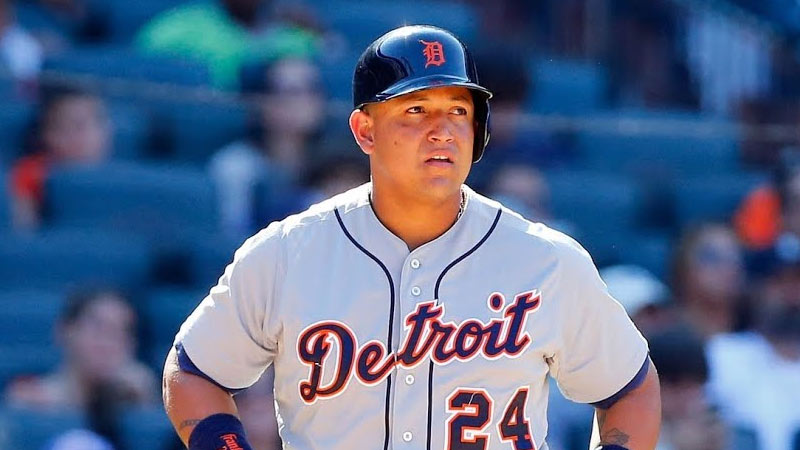
The Detroit Tigers have long been associated with a tradition of excellence on the baseball field, and that extends beyond their prowess with the bat and on the pitcher’s mound.
The Tigers have consistently showcased exceptional defensive skills, earning recognition for their players’ outstanding glove work.
The prestigious Gold Glove Award, presented annually by Rawlings to the best defensive players in each position, has found its way into the hands of several Tigers throughout the years.
In this tribute to defensive brilliance, let’s take a look at the distinguished Tigers who have been honored with the Gold Glove Award.
Table:
| Year | Player | Position | Gold Glove Awards |
| 1983 | Alan Trammell | Shortstop | 4 |
| 1984 | Lou Whitaker | Second Base | 3 |
| 1985 | Lance Parrish | Catcher | 3 |
| 1993 | Travis Fryman | Third Base | 1 |
| 2006 | Ivan Rodriguez | Catcher | 1 |
| 2011 | Alex Avila | Catcher | 1 |
| 2012 | Jhonny Peralta | Shortstop | 1 |
| 2013 | Austin Jackson | Outfield | 1 |
| 2014 | Ian Kinsler | Second Base | 1 |
| 2016 | James McCann | Catcher | 1 |
| 2018 | Nicholas Castellanos | Right Field | 1 |
| 2020 | Isaac Paredes | Third Base | 1 |
FAQS
Has Miguel Cabrera won a Gold Glove?
Miguel Cabrera, primarily known for his exceptional batting skills, has won TWO Gold Glove award in his career.
Does Miguel Cabrera have a Gold Glove?
yES, Miguel Cabrera has received a Gold Glove award during his career.
Miggy Gold Glove – Is that a thing?
“Miggy” Cabrera is a common nickname for Miguel Cabrera.
What defensive positions has Miguel Cabrera played throughout his career?
Cabrera started as a third baseman and later transitioned to first base, showcasing versatility by playing multiple positions.
To Recap
Miguel Cabrera’s fielding abilities remain a topic of nuanced discussion within the baseball community. While his offensive prowess is indisputable, assessments of his fielding performance vary.
Advanced metrics offer a more comprehensive understanding, revealing strengths and areas for improvement.
Despite not earning Gold Glove Awards, Cabrera’s defensive contributions, particularly in specific game situations, showcase his capability to impact crucial plays.
As his illustrious career evolves, the narrative surrounding Cabrera’s fielding legacy continues to be a multifaceted exploration, shaped by statistical analyses, positional shifts, and the dynamic nature of defensive assessments in the ever-evolving landscape of professional baseball.

